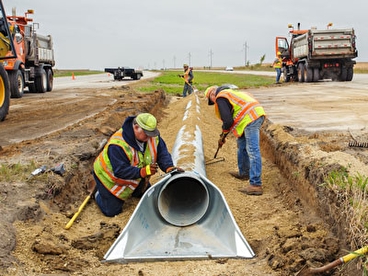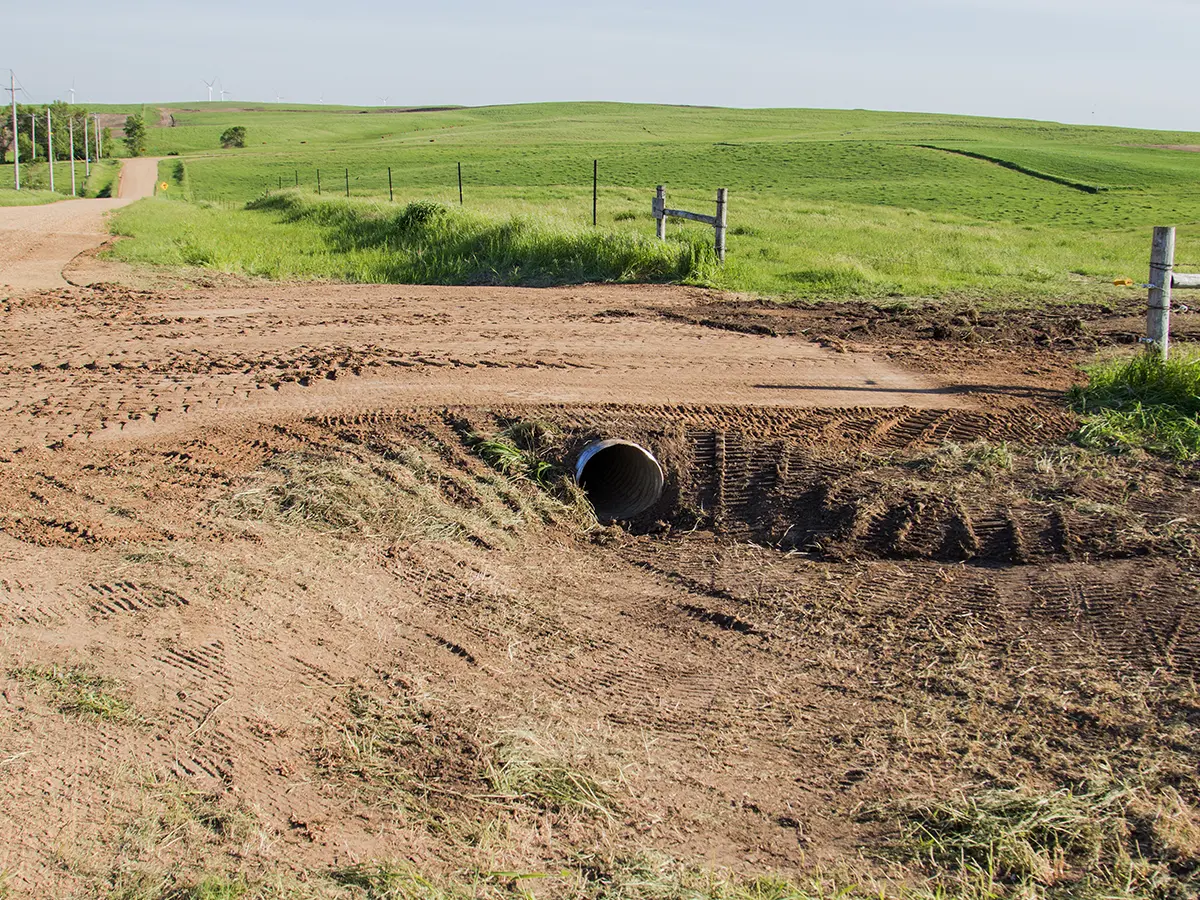Thorough Underbrush Clearing for Land Management
Thorough Underbrush Clearing for Land Management
Blog Article
Culvert Installation Made Easy: Step-by-Step Guide for Success
Setting up culverts may appear like a straightforward task, however guaranteeing a successful end result calls for cautious planning and execution. From picking the suitable culvert size to integrating correct drainage steps, each action in the installation process plays an essential function in the functionality and durability of the culvert system. By adhering to a systematic strategy and taking notice of vital information, the installment can proceed smoothly, lessening potential problems down the line. Keep tuned to discover the important steps and considerations that can make culvert installation a seamless and effective undertaking.
Choosing the Right Culvert Size
Picking the proper culvert dimension is essential for making sure effective water circulation and architectural integrity in culvert installment projects - Pad Construction. The dimension of the culvert directly affects the circulation ability of water through the structure. A culvert that is also small can result in flooding and overflow, while one that is also large may result in reduced water rate, potentially causing sediment buildup and blockages
To identify the best culvert dimension, factors such as the watershed location, optimal flow rates, and hydraulic efficiency requirement to be carefully thought about. Computations based upon these parameters assist in choosing a dimension that can effectively take care of the expected water volume while decreasing the threat of obstructions and architectural failing.
It is necessary to seek advice from design guidelines and requirements to guarantee that the chosen culvert size meets the project requirements and local laws (Pad Construction). By choosing the right culvert size, task managers can enhance water flow, protect against potential problems, and enhance the total performance and long life of the culvert installment
Preparing the Installment Site
Efficient culvert setup necessitates meticulous prep work of the installment site to make sure ideal structural support and performance. Prior to beginning the installation procedure, it is essential to clear the website of any type of debris, greenery, or obstructions that can restrain the culvert's positioning. Guaranteeing a level foundation is important for the appropriate alignment and security of the culvert. This might entail rating the website to create a smooth, even surface area that can appropriately sustain the weight of the culvert and any type of anticipated tons. Additionally, proper compaction of the soil below the culvert is required to avoid clearing up or shifting gradually.
In addition, it is very important to think about aspects such as soil composition, groundwater levels, and ecological effects when preparing the installation site. Performing a detailed site analysis can aid determine any kind of possible difficulties or threats that may affect the culvert's performance. By putting in the time to prepare the setup site correctly, you can assist assure a successful culvert installation that satisfies structural needs and ensures lasting functionality.
Placing the Culvert Appropriately

The quality at which the culvert is placed is vital for maintaining a proper incline for water flow. A gradual incline aids stop pooling and advertises reliable drainage. Additionally, the culvert should be oriented correctly to make sure that the inlet and outlet are in the proper locations. This orientation is crucial for the culvert to operate successfully in taking care of water circulation.
Backfilling and Condensing the Dirt
Proper backfilling and compaction of the soil around the culvert is important to make sure security and stop potential concerns in the future. Once the culvert is correctly placed, the following crucial step is to backfill the location around it with appropriate material. The backfill material must be devoid of rocks, particles, and natural issue to avoid damages to the culvert. It is recommended to use granular material such as sand or gravel for backfilling, as it gives excellent water drainage and compaction buildings.
After putting the backfill product, it is essential check it out to compact it in layers of consistent density. Making use of a compactor or a mechanical meddle, compact the dirt delicately to avoid damaging the culvert. Compaction assists in reducing the chances of settlement and guarantees uniform support around the culvert. It is essential to portable the dirt equally on all sides of the culvert to maintain its structural integrity.
Appropriate backfilling and compaction not just provide security to the culvert but also assist in protecting against soil disintegration and maintaining the durability of the culvert system.
Guaranteeing Proper Water Drainage Combination
Incorporating efficient water drainage remedies plays an important function in the general capability and long life of culvert setups. Correct drainage assimilation is vital for managing water circulation, stopping disintegration, and ensuring the architectural honesty of the culvert system. To attain this, it is essential to create a thorough drain plan that thinks about aspects such as the volume of water expected, the topography of the area, and the kind of dirt existing.

In addition, integrating features like disintegration control steps, such as riprap or plant life, can even more enhance the effectiveness of the drainage system. By carefully preparing and applying these drain solutions, culvert setups can work successfully and stand up to the examination of time.
Conclusion
In verdict, proper culvert setup is important for maintaining effective water drainage systems. By choosing the appropriate culvert size, preparing the installment site, putting the culvert properly, backfilling and condensing the soil, and ensuring proper drainage integration, success can be attained. Adhering to these steps will certainly help make sure the longevity and effectiveness of the culvert, inevitably contributing to the general success of the drain system.
Report this page